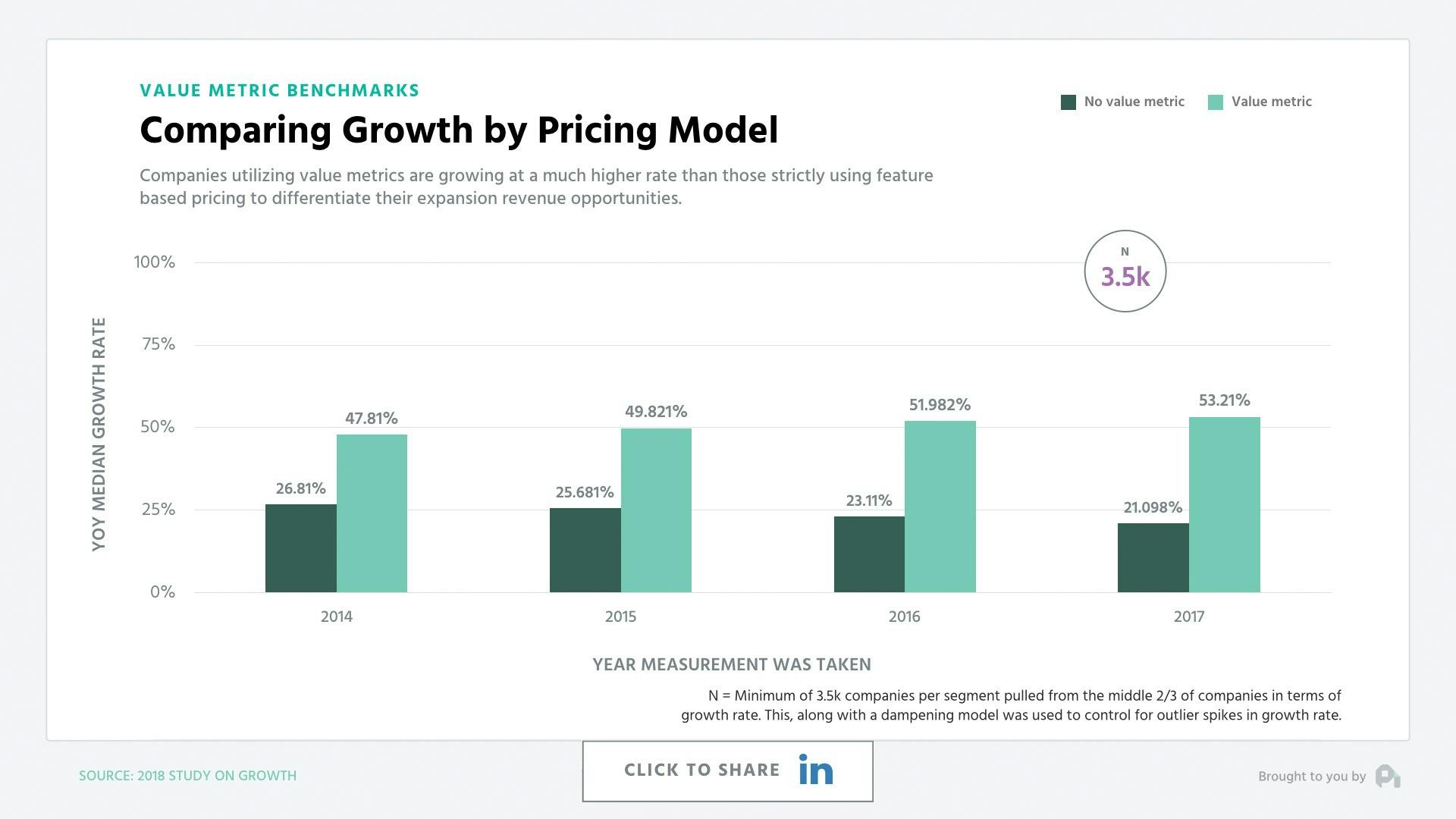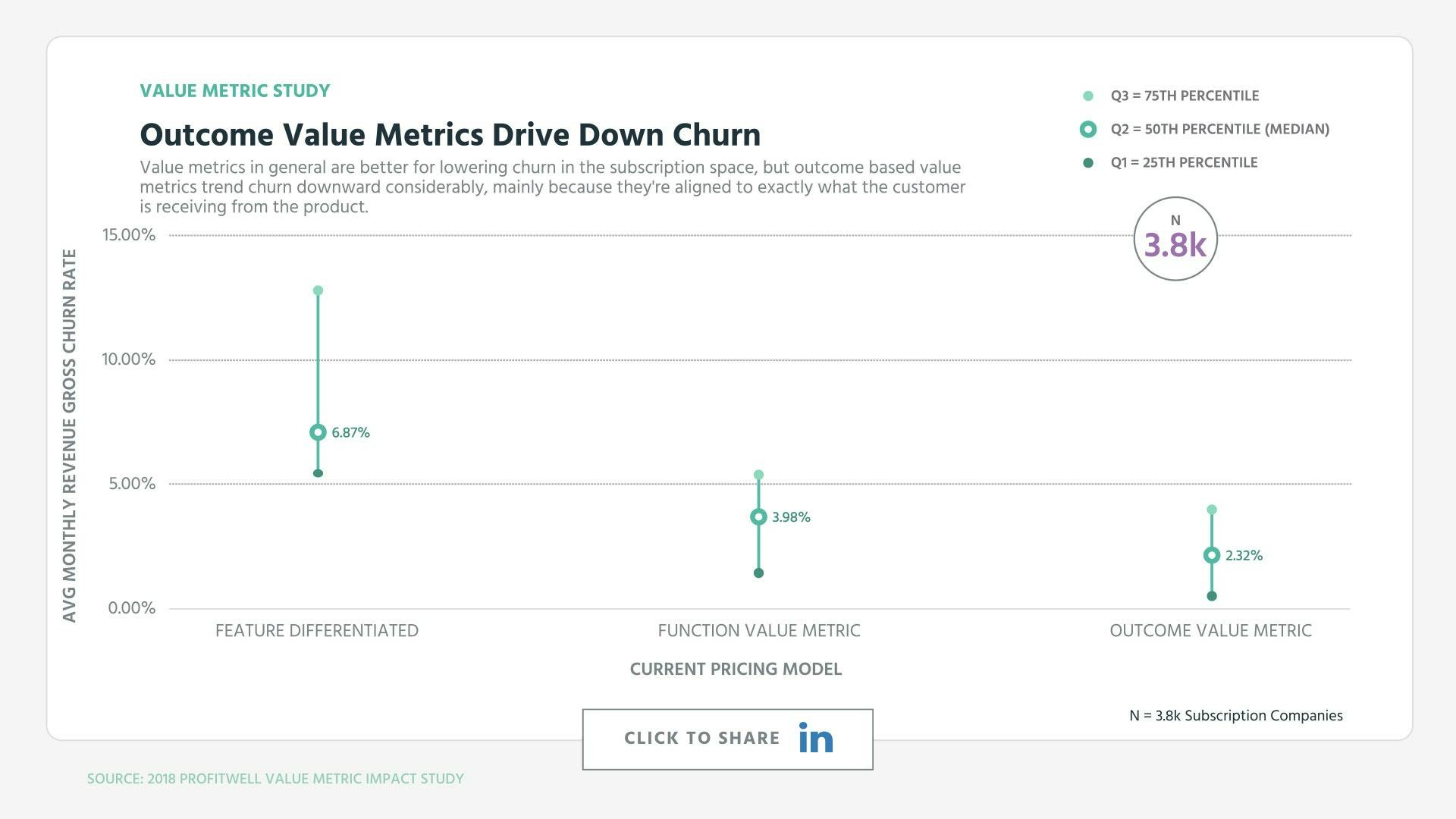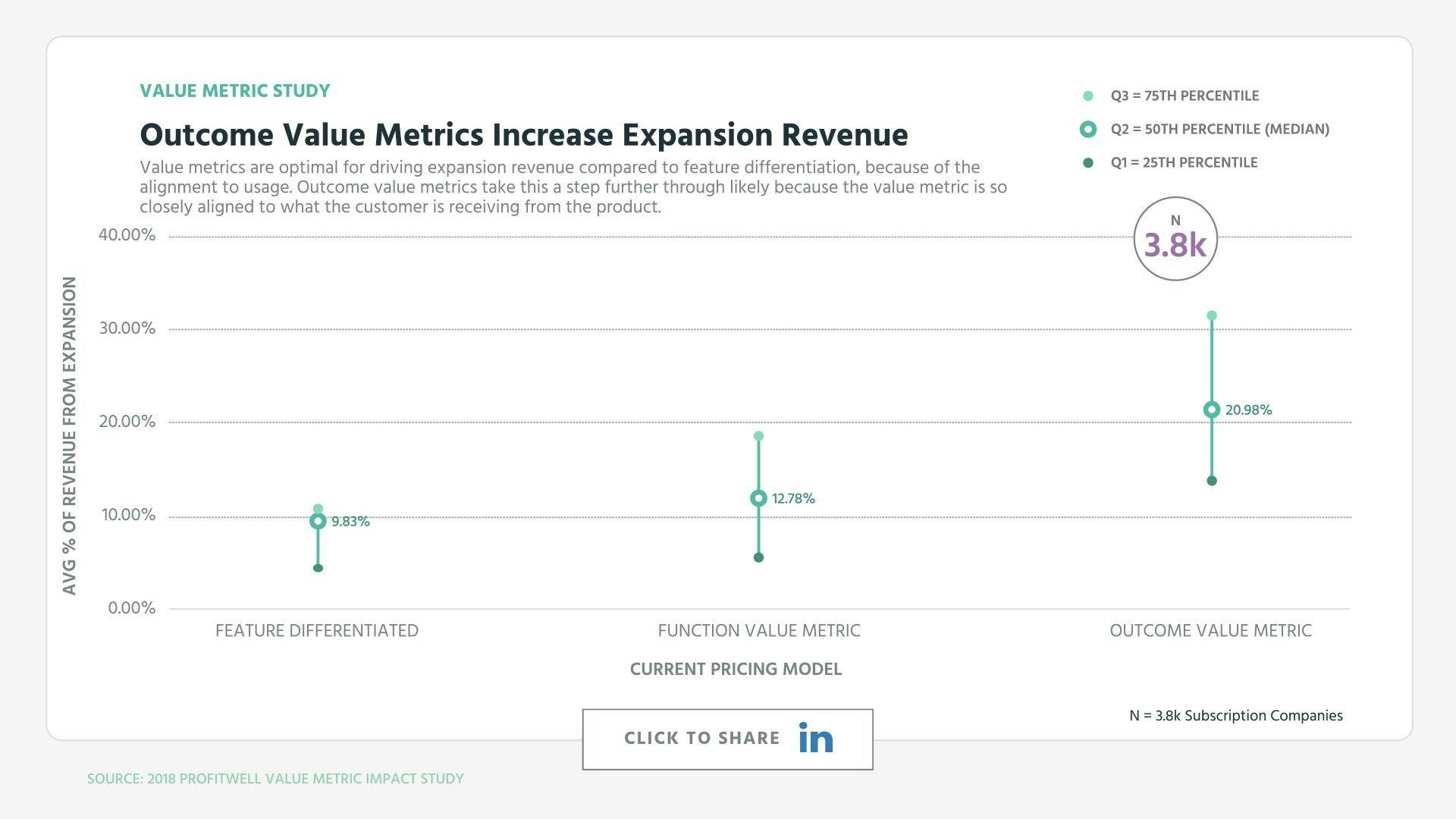Value metrics are what you charge for - per user, per 100 videos, per something that theoretically aligns with where your customer ascribes value from your product. They’re the most effective pricing mechanism you can have in the subscription world, but not all value metrics are created equal.
On this episode of the ProfitWell Report, James Carbary, Founder at Sweet Fish Media and the B2B Growth Show, asks us about what value metrics are best for growth. To understand value metrics and which type you should be using, and of course to answer James’s question, we looked at nearly four thousand subscription companies across multiple industries.
It’s important to understand the impact of value metrics. When comparing companies who use a value metric to those who don’t, you’ll note that those utilizing value metrics are growing at nearly double the rate as those deploying strictly feature differentiation.

This is because when you’re using a value metric properly, your customer is only paying for their usage where they’re getting value from your product. If they use less, they pay less, so why would they churn. If they use more, they pay more and don’t complain, because they’re getting value.
That being said, there are two types of value metrics - functional and outcome based. Functional value metrics are like per user or per 100 videos. Pricing scales around a function of usage. Outcome based value metrics are where you charge based on an outcome - like how many views a video received or how much money you made your customer.
When we look at the gross churn of companies using different models you’ll note that both types of value metrics outperform feature differentiation with up to 75% less churn, but the outcome based value metrics take this a step further with an additional 40% reduction in churn.

When you think about the center of an outcome based value metric this make sense, because if you’re aligned towards an outcome, why would you churn if you still believe in that outcome as a customer.
This trend continues further when looking at expansion revenue. Both types of value metrics still outperform feature differentiated pricing models with at least 30% more expansion revenue, but outcome based value metrics push those gains to nearly 50%.

If I can give you more of the outcome you’re buying my product for, why wouldn’t you spend more with me.
Ultimately, value metrics are everything when it comes to properly pricing subscription products, because you're aligning your revenue model directly to where a customer interprets value from your product.
We all don’t have the luxury of pricing based on outcome though, because sometimes it’s hard to perfectly measure how much money someone gained from using your product or how much that time you saved them is worth. Yet, we can take a lesson from this data in making sure we get as close to that customer and as close to value as technically possible.





